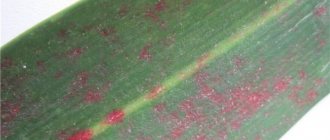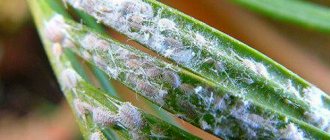Ficus diseases appear if the conditions of maintenance and care at home are violated. The growth of home ficus does not require complex care. In a modern apartment he feels great, but is still susceptible to many diseases. It is important to correctly identify the problem in order to choose the appropriate treatment method. Ficus diseases appear due to lack of prevention and unfavorable external factors (extreme heat, excess humidity). Often a flower becomes infected from nearby plants.
Why are ficus diseases dangerous?
Diseases of Ficus Benjamin can significantly damage the plant, and in some cases even destroy it. What should you do if your ficus leaves turn red or have white spots, mites, aphids and white or red dots? You need to act immediately. If you do not purchase special medicinal products in time and do not rid the sick houseplant of pests and diseases, as well as white lumps, it may simply die.
In addition, what is dangerous about an invasion of parasites is that it increases the risk of a similar problem occurring in your other evergreens. Study the most common diseases of ficus, determine the source of the outbreak of the flower disease, and then proceed to full treatment.
Ficus pests
Insects leading a parasitic lifestyle carry out their attacks not only on plant crops grown in the open air. Even home decorative vegetation is completely unprotected from pest invasion. Only by studying the existing species and the forms of their manifestation can you preserve the health of the grown ficus.
Shchitovka
The parasite's main food is plant juices. When vague reddish spots appear on the inside of the leaf blades, this means that a scale insect has infested the flower. The pest affects not only the foliage, but also the soft parts of the trunk. If the insect is not stopped in time, a sooty fungus will develop on the deposits left behind. First, the treatment is carried out with a solution of laundry soap, and then the culture is sprayed several times with a special product.
When vague reddish spots appear on the inside of the leaf blades, this means that the flower has a scale insect.
Spider mite
Ticks that form webs come in red and yellow colors. Their presence is usually expressed in the form of a gray coating on the leaves and a cobweb entwining the entire flower. The parasite appears in rooms with air that is too dry without the slightest sign of moisture. To prevent the tick from destroying the plant, you need to take timely measures and clearly know how to properly treat the ficus against pests. First, the room is provided with good humidity, which insects cannot tolerate at all.
Next, the flower is treated with soapy liquid. Wash off the pest and the remains of its vital activity with a generous stream of shower. After this, the plant is covered with film and kept in this state for several days.
Mealybug
This is one of the most dangerous parasites. It, feeding on the sap of the plant, stops its growth and can lead to death. Mealybug on ficus appears in the form of blackened leaves. The insect is tiny in size and light brown in color. It cleverly camouflages itself in the leaf axils and is not always immediately noticeable. The main danger of the pest is that it is able to move quickly and simultaneously attack a large amount of domestic vegetation. There are not too many ways to get rid of scale insects. First of all, the surface of the ficus is freed from plaque. A clean plant is sprayed with tobacco solution every day for a week. To consolidate all the procedures performed, the plant is treated with a fungicidal agent.
Causes of the disease
Sometimes ficus trees can develop various kinds of diseases. They usually occur due to improper or negligent care. Pests emerge from contaminated soil, quickly attacking the roots and destroying the plant. Or the flower may freeze and die from fungi and other related infections.
The main causes of ficus diseases:
- temperature imbalance;
- excess or deficiency of air humidity;
- untimely or frequent watering;
- lack or oversaturation of essential microelements.
Ficus is never placed near a heating radiator. If heating devices are located nearby, then a moistened cloth is placed on them and on the windowsill for protection, and the surface of the flower is often sprayed with small drops. If the humidity, on the contrary, is high, then it is advisable to wait until the soil dries 2-3 cm, and then continue watering.
You should beware of extreme heat and excessively dry air, strong drafts and gusts of wind. You cannot spray ficus and then place it in the sun - you can cause the leaves to burn.
If the grower takes diligent care of the plant, then the risk of disease is minimized. However, sometimes cuttings and young stems may have hidden diseases that are not noticeable at first glance. Infections and parasites (for example, nematodes) are introduced from the soil. Ficus often dies from them.
It is recommended to fertilize ficus in the warm season - once every two weeks. With the onset of autumn, they feed less often; in winter there is no need to touch the flower. Nourish the soil according to the instructions on the package so as not to overfeed. The leaves also react to excess feeding - dots and specks appear on them.
If rot appears at the base of the root, the leaves wither and curl, the culprit is most likely constant flooding. If the ficus stops growing, the soil is depleted and mineral resources are running out.
Leaf diseases
Why do ficus leaves fall off? There may be several reasons why the plant is sick. Among the most common diseases of the leaf blade of the home ficus, the following are worth highlighting.
If the leaves begin to wither and curl inward, this is the first sign that the ficus is sick. The appearance will clearly show the reason why the infection occurred. Leaf blades may look like this.
- Brown. Demonstrate a state of stress as a result of transplantation.
- With reddish spots. Several reasons: in most cases - sunburn, as well as increased watering and drafts.
- With brown spots. Insufficient watering and dry air, exposure to heat, excess fertilizer in the soil. Plaques of this color along the leaf veins indicate infection by parasites.
- Covered with gray coating, cobwebs and white spots. Mites, thrips larvae, beginning gray rot.
- Yellow edges with small white dots. Excessive watering, excessive humidity.
The leaves are turning yellow
As a rule, this problem occurs in winter. Heating devices are actively working in the apartment, and hot air flows are often directed at indoor plants. For a sick ficus, this factor will be disastrous. The leaves begin to turn yellow, wither and gradually fall off. When a flower sheds its leaves en masse, it stops growing and may die.
The best solution for you is to move the flowerpot with the evergreen specimen to another, much more suitable place. However, be careful when looking for a new corner to place your ficus pot. If you disturb it too often, the yellowing of the foliage may begin again, but this time the ficus will get sick due to the stressful situation you created.
Another reason for yellowing leaves is burns caused by direct sunlight.
How to save a plant from this?
- In summer, the flower should not be exposed to direct sunlight for a long time.
- In winter, it is better to relocate it to places far from the batteries.
To humidify the air, use a container of water near the plant.
Leaves fall off or become small
Such ficus diseases also pose a serious danger to the plant, so they must be treated as quickly as possible. The diseased plant gradually withers, and the reason for this is a lack of nutrients in the soil. The situation can be corrected. To do this, it is necessary to replant the plant, completely replacing the soil composition;
The tips of the leaves turn yellow, yellow spots appear
This problem indicates an excess of moisture in the soil. Do not forget that ficus loves moisture, but watering should be moderate. Be sure to let the soil dry before irrigating the substrate again. For an indoor flower, a lack of moisture will be much less destructive than its excess.
It is urgent to dry the soil and review the watering rules. Ficus does not tolerate stagnation of water in the pan. Drafts and, in general, any sudden change of environment are harmful to him.
Ficus sheds leaves from below
This reason is considered natural - each ficus leaf blade develops within three years, and then ages and falls off. However, the trunk cannot be completely exposed, since in this case it will be very difficult to save it. If you observe the fulfillment of unsuccessful forecasts, it’s time to replant the flower or add complex mineral fertilizers to the soil;
Why does ficus shed its leaves completely?
The main reason for dropping leaves is overdried soil or watering with poor quality water. If a ficus sheds its leaves due to a lack of water, then its root system is also not in the best condition, because it is directly related to nutrition and water balance. In this case, you need to water it generously and subsequently monitor the quality and frequency of watering.
Ficus tree varieties tend to fall off the leaves of the lower part of the trunk , but this is not a disease. In general, the bush itself never becomes bare, but on the contrary produces more and more new leaves. Ficus leaves may fall off in other cases. The flower is either affected by an infection or by some pest. In such cases, treatment with special preparations is necessary.
Pests on ficus leaves
As a result, the leaf blade dies sooner or later if treatment is not taken. You can get rid of pests with the help of special insecticidal preparations, which you need to buy in the store.
Ficus doesn't grow
The following external symptom can also indicate a problem with the soil: the leaves begin to grow smaller and smaller and eventually the ficus stops growing altogether. Most often this occurs due to soil depletion . When the moment comes that the soil is depleted of all useful resources, the recently blossomed ficus leaves begin to gradually become smaller in mineral components, and their predecessors turn yellow, wither and fall off.
To return the plant to normal functioning, it is necessary to replant it or replace the soil. The substrate must be saturated with the necessary mineral complex and vitamins. Stores now sell soil specially prepared for ficus.
Symptoms and treatment
There are many symptoms of plant diseases: blackening or yellowing of leaves, as well as their wilting, curling and falling, slowing of flower growth, knotty or rotting roots, the appearance of plaque or spots on the leaves. Let's take a closer look at Ficus disease with photos.
Blackening
Why do Ficus leaves turn black around the edges? Most likely, the reason is improper care of the plant.
- The problem is the wrong solar or thermal mode.
What to do? You should pay attention to the location of the flower: it should not be in direct sunlight or in a hot, dry room. - If the leaves suddenly turn black and fall off, the problem lies in improper watering. Most likely, the soil is waterlogged, that is, you water the flower too often or too much. Despite the fact that the flower loves moisture, excessive watering will only harm it.
- If they constantly turn black, despite proper care, then the problem is most likely in the soil composition that is unsuitable for the flower.
- If they sometimes darken but constantly wither, the problem is too much fertilizer.
You should not feed a recently transplanted plant: the new soil contains enough substances necessary for growth. It is also undesirable to fertilize Ficus in winter, since an excess of minerals in the soil with a lack of sunlight and heat leads to weakening of the plant (read more about caring for ficus in winter here).
IMPORTANT! It is better to place the flower on a north window so that it receives enough light, but the sun’s rays do not damage the flower.
ATTENTION! It is recommended to water the plant twice a week and little by little, and you can prevent drying out by spraying the foliage daily with water from a spray bottle.
REFERENCE! The soil for ficus should be slightly acidic or neutral; most often, the so-called “leaf soil” (sold ready-made in flower shops) is mixed in a pot with peat and humus in a ratio of 2:1:1, possibly adding a small amount of sand. The diseased plant must be transplanted into a suitable soil substrate.
IMPORTANT! Excess fertilizer leads to soil salinity, which has a bad effect on the condition of the plant. Ficus should be fed once every two months with a weak solution of special fertilizer.
Yellowing
Yellow leaves are a common problem faced by Ficus owners.
- If the yellowing is caused by the natural process of wilting, then there is nothing to worry about: like all plants, the flower sheds its old leaves. The falling of the lower leaves of a flower in autumn and winter is a common occurrence. As a rule, the lifespan of a leaf is no more than two years.
- If the Ficus sheds its leaves en masse after you move the pot to a new location, then the plant is under stress.
- A possible cause may be dry indoor air.
What to do? If the flower is on the window, you need to close the radiator in the cold season and regularly spray the leaves. - If this happens after the flower has been watered, it is necessary to stop watering for a couple of weeks so that the roots of the plant do not rot. If this does happen, you should transplant the ficus into new soil and cut off the rotten roots.
- Ficus plants are very sensitive to air fluctuations. Pay attention to where the flower is. If it is constantly in a draft or under air conditioning, then most likely its leaves will turn yellow and fall off.
- Yellowing may be caused by a lack of nutrients in the soil. In this case, helping the flower is very simple: you need to feed it with any fertilizer suitable for Ficus.
IMPORTANT! The plant is very sensitive to changes in temperature, so it is not recommended to frequently move it from place to place.
What is the cause of yellowing?
ATTENTION! You should not place a ficus pot next to a door, fan or air conditioner, or on a window if it is blowing from it.
REFERENCE! The main element needed by the plant is nitrogen; in addition, mineral fertilizers include phosphorus, potassium and calcium.
White plaque
White dots on Ficus, what are they?
Dry white spots on the plant that are easily rubbed off the leaf are called powdery mildew and are a fungal disease contagious to flowers. White spots appear if the plant is standing in a room with stagnant air or if fungal spores have entered damaged leaves.
How to cure Ficus? The plant can be treated with a folk remedy - wiping with a solution of laundry soap or a modern one - spraying with a preparation containing copper salts.
If the white coating on the Ficus looks “fluffy”, then the reason for their appearance is the plant being infected with a mealybug. In this case, it is necessary to carefully treat the flower, removing plaque and pests and then washing it with warm water, and then spraying it with an actelic preparation.
ATTENTION! Actellik solution must be made in strict accordance with the instructions, and the drug itself, due to its toxicity, must be kept away from children and pets.
Brown spots
If the Ficus has brown spots on the leaves, then the cause should be sought in excessive watering: most often such damage indicates rotting of the roots.
If brown spots appear on the leaves of the flower, it is necessary to replant the plant as quickly as possible, cutting off the rotten roots.
Large brown spots on the edges are a sign of excess minerals, in this case it is worth reviewing the plant’s fertilization regime: we remind you that you need to feed the flower only during the growing season (spring and summer) and once every two months.
What to do if Ficus leaves fall off?
There are several possible reasons why Ficus leaves are falling:
- Incorrect watering. The optimal regime for watering the plant is twice a week.
- Stress to the plant due to its rearrangement. What to do in this case? It is recommended to allocate a permanent place for the flower and move it as little as possible. Also, sudden changes in temperature and humidity should not be allowed. The flower should not be placed in a draft.
- Low air humidity. To eliminate it, you need to regularly spray the plant with a spray bottle.
- Excess fertilizer. Do not overuse fertilizers; too frequent fertilizing leads to soil salinization and plant death.
- Why do Ficus leaves fall off? Incorrect soil composition. You should buy special soil for ficuses or make your own soil mixture (the soil is mixed with sand, peat, humus, and expanded clay is added for loosening).
If the Ficus shed its leaves in autumn and winter - an absolutely normal and natural phenomenon , you should only worry if they fall off during the growing season, that is, in spring and summer.
Let's take a closer look at what to do in the video below:
Effect of temperature on the plant
Ficus should not be overdried in a hot room or overcooled. What to do if the flower still suffered from temperature violations?
- If the plant is frozen, it is necessary to remove it from the draft (if it is standing on a ventilated window or under an air conditioner) and ensure a constant temperature of about 20 degrees.
A frozen flower should be sprinkled with settled water at room temperature and not watered until new shoots appear. After the plant comes to life, you can water and fertilize it as usual. - If the plant is in a hot room with insufficient air humidity, then the tips of the Ficus leaves dry out, and they also begin to dry out, curl and fly around, and shoots may fall off.
If the flower is too dry, water it with settled water at room temperature, move it away from the battery and spray it with water every day.
Has the flower slowed down or stopped growing?
The reason should be sought in improper care (incorrect solar and temperature conditions, excessive watering, lack of feeding). Fixing the maintenance problem will bring your Ficus back to life. For prevention, it is necessary to replant the plant once every 1-2 years into a larger pot.
REFERENCE! You can only replant indoor plants during the growing season, preferably in the spring, so that the roots grow well in the new pot.
Infectious diseases
If various pests appear on the leaves of Ficus Benjamin, you can fight them quite effectively, especially if you noticed the problem at an early stage. But if you are faced with infectious diseases, it is much more difficult to cure the plant from them.
The first signs are difficult to notice, and when a flower is seriously ill, even the most effective methods do not always give the desired result. To defeat infectious diseases of ficus plants, it is necessary to take a closer look at what plant ailments a domestic gardener may encounter, and what to do in this case.
Why did spots appear on the leaves?
Most often, such problems appear as a result of the following actions:
- improper watering;
- unsuitable temperature conditions;
- exposure to disease, insects or fungi;
- cramped pot.
Reference. The spots can be of different colors. Any inclusions should alert the plant owner.
Brown dots
They often look like rust. The reason for the appearance may be the following:
- damage by fungal spores;
- exposure to direct sunlight;
- pest attack.
Interesting. Direct sunlight causes burns to the plant, so it must be protected from them. However, with a lack of light, the tree begins to shed its leaves.
You need to carefully examine the leaves to determine what is causing the brown spots.
Black
The reason for their appearance may be:
- pest attacks;
- fungal diseases.
An effective method of control is treatment with fungicides.
Yellow plaque
In this case, the plant was affected by fungal spores. They are usually found in the ground.
To fight you need:
- Inspect the plant.
- Transplant it into another pot, completely replacing the soil.
- Treat with fungicides.
Important. During rehabilitation, the ficus must be carefully monitored and the care requirements strictly followed.
Fungal diseases
Fungal diseases of ficus are considered the most dangerous for the plant. If pests of Ficus Benjamin are removed using high-quality insecticides, in some cases a green specimen affected by a fungal disease cannot be saved even by an experienced gardener. What specific ficus diseases fall into this category is worth studying carefully.
Anthracnose or rust
Along the edges of the leaf, rust-colored spots with a brownish border are visible. The damaged part dies, forming holes in the leaves. Then they darken and fall off. The infection is caused by a fungus called Colletotrichum orbiculare.
Pests are controlled by spraying the roots and stem with a fungicide. It is also used to treat surfaces with “ulcers” from rust.
Powdery mildew
Causes white plaque-like spots. Occurs in areas of pest damage and fungal infection. Plaque also appears from strong light exposure.
- To get rid of powdery mildew, laundry soap alone is not enough. You will also need copper sulfate and soda ash. Prepare a medicinal solution by mixing a teaspoon of soda and two grams of soap in a liter of water. Separately dilute 2-3 grams of copper sulfate. Combine everything together, add another liter of water and spray the affected parts with this mixture.
Botrytis
A gray coating consisting of small spores of the fungus Botryotinia fuckeliana. The spots gradually become darker, then the leaf blades fall off the stem.
Sooty mushroom
The lesion looks like a black coating similar to soot. The reason is an active attack by insects. Their sticky secretions feed fungi that silently multiply on the foliage.
- Black plaque indicates a double lesion. Sooty fungus occurs as a result of insects. A concentrated soap solution will prevent the spread of fungus. If the leaves are severely affected, it is better to remove them.
Cercospora
Caused by fungi of the Cercospora family. Visually, the manifestations of the disease look like brown and grayish dots on the underside of the leaf. Then the dots become much larger, and the leaves turn yellow and fall off.
Cercospora and anthracnose require treatment with special antifungal drugs.
Such an infection cannot be started; urgent measures must be taken. The ficus may not survive and dry out completely. Treatment of fungal infections is carried out immediately with special means.
Late blight, pythium or rhizoctonia
Dangerous fungi that cause rotting. It is better to throw out or destroy an infected ficus to keep nearby plants healthy.
Gray rot
Among the diseases of the house ficus, which are the result of the activity of fungal formations on the flower, it is worth highlighting first of all gray rot. The key sign of the disease is blackened leaves, which eventually fall off. As a rule, the disease appears due to excessively high humidity in the room. In the fight against this disease, it is necessary to reduce the frequency of watering and also ventilate the room more often.
- If gray rot appears, then it is necessary to immediately remove the infected leaves. The soil at the roots should dry well. This should help revive the plant. It is also recommended to replace the soil and replant the remaining roots in clean soil.
Sooty mushroom
Treatment of black plaque (and this is a key sign of the disease) may be necessary after the plant has been attacked by harmful insects. The initial stage of fighting the disease involves washing the flower with soapy water. Soak a sponge in the liquid and carefully go over each leaf. The stem must also be treated with a fungicide. As a preventative measure, do not overwater the flower in the future. Irrigating the substrate with a solution of manganese will not hurt either. It is advisable to carry out this procedure at least once a month.
Fungi on leaves
Among the fungal formations that mostly appear on leaf blades, it is worth highlighting cercospora, anthracnose, and botrytis. As such diseases develop, black, yellow or brownish spots develop on the leaves. If you don’t fight them, the same result awaits you: the death of the leaf blade.
The disease must be eliminated by removing the affected parts and treating the plant with a fungicide.
Possible causes of the problem
The most likely reasons for the appearance of dark spots on ficus leaves:
- improper care;
- too dry air;
- too much watering;
- using the wrong fertilizers;
- illness;
- pests
Let's take a closer look.
Errors in care
In order for the ficus to be healthy and delight with its beautiful leaves, it is necessary to inspect them every week, and as preventive measures, clean the pot, tray, remove old crumbling leaves, and sometimes water the ground with a weak solution of potassium permanganate.
If the plant was outdoors in the summer, after it is brought into the apartment, its leaves should be washed with a soapy solution to prevent the spread of parasites.
Each new plant purchased must be quarantined for some time - away from other flowers. If the “newbie” does not show signs of disease within a week, it can be placed along with all the other plants.
The appearance of dark spots can be caused by the following care errors:
- little lighting;
- inappropriate temperature indicators;
- unsuitable soil composition;
- excess or lack of moisture;
- insufficient or excess supply of nutrients;
- low humidity.
Overdrying of leaves
Overdrying begins when the room is too hot, and dark spots appear on the leaf blades, which dry out after some time.
Dry air is another cause of dryness. At the same time, the leaves turn yellow and die en masse. Most often this happens in summer and winter, when the batteries start to work.
If the drying situation is not corrected in a timely manner, the plant may die.
Overflow
Ficus does not like heavy watering, but there should not be a lack of watering either. To find the golden mean, you need to check the soil moisture in depth. If you feel that the soil in the depths is still wet, watering should be postponed for a couple of days. In winter, the plant is watered once a week.
Ficus loves to swim, but in order not to flood the soil during water procedures, it must be covered with cellophane and the ficus should be sprayed with warm water (about 40 degrees). If after this procedure there is still water in the pan, it must be poured out.
When plants are overwatered, the first thing that happens is the edges of the leaves begin to turn yellow.
Wrong fertilizers
Ficus leaves may become covered with a white coating due to incorrectly chosen nutrient mixtures for fertilizing it. In addition, the plant may even stop growing due to excess fertilizer. The fact is that if the volume of necessary nutrients is exceeded, the ficus simply stops absorbing them.
Ficus should be fertilized no more than once every two weeks, and the fertilizer should contain a lot of nitrogen.
Diseases
Ficus diseases are influenced by external influences, so even very careful gardeners can get the plant sick.
- Powdery mildew - a white fluffy coating appears on the leaves, it can be easily wiped off. The reason is an excess of solar radiation, the presence of insects that damage leaf plates, and infection with a fungus. Treatment - wash the plant with soap dissolved in water, treat with a fungicide, severely damaged leaves should be removed.
- Rust or anthracnose - rusty spots appear along the edge of the leaf blade, and after a while holes appear in their place. Then the leaves turn black and die. The reason is a fungus. Treatment - infected leaves are removed, and healthy ones are treated with copper oxychloride and a fungicide.
- Cercospora - black dots appear at the bottom of the leaf, and over time they increase in diameter. The reason is dampness, fungus. Treatment is a fungicidal solution.
- Mold, gray rot or botrytis - a gray coating appears on the leaves; when shaken, dust rises, which consists of fungal spores. The reason is hot air and high humidity, mold fungi. Treatment is cutting off the affected parts, treating with fungicides and insecticides.
- Root rot - leaves turn gray and wither, the root system rots. The reason is a fungal infection, excessive watering. It cannot be treated; the plant should be disposed of.
- Sooty fungus - a gray-black coating appears that resembles soot. The cause is a fungal infection. Treatment is to remove the affected leaves, wash the healthy ones with soapy water, and treat them with a fungicide.
From the video you will learn how to treat ficus diseases at home:
Pests
Pests usually attack a weakened plant. By themselves, they do not lead to the death of the ficus, but quite often a fungal infection joins the negative activity of the parasites - in this case, the ficus may die.
- Spider mite - lives on the tips of shoots and on the back of the leaf. After its bites, brown dots appear, and traces of cobwebs can also be seen on the plant. Treatment - washing with a solution of soap in water, spraying with ground sulfur, Bordeaux mixture, insecticides.
- Mealybug is the habitat of the plant axil. The leaf becomes covered with a white cotton coating (parasites live inside it). Treatment - soap solution, removing plaque with cotton wool soaked in alcohol, spraying with tobacco solution. If the lesion is extensive, treatment is carried out with Confidor.
- Aphids - prefer to cluster on the back side of the leaf blade. The insect feeds on the plant sap, causing the leaves to curl and dry out. Treatment - soap solution, diluted pyrethrum.
- Scale - brownish dots appear along the leaf veins on the reverse side. Over time, the leaf turns yellow and falls off. Treatment - insecticides have a detrimental effect only on the larvae; mature individuals have a shield, so these drugs do not affect them. They are removed with cotton wool soaked in a soap solution. They also treat with tobacco dust and Actillic.
- Thrips - larvae can be seen on the inside of leaves. Brown-black or whitish-yellow spots appear. Treatment – pyrethrum solution, Aktar, Tanrek.
- Root nematodes - settle on roots. The leaf of the plant turns pale and dies. Treatment is keeping the plant roots in an insecticide solution, replacing the pot and soil.
Video about ficus pests and methods of combating them:
If the Benjamin species is affected
Spots on the leaves of Ficus Benjamin appear for the same reasons as listed above. In addition, it can be affected by whitefly, which leaves a white coating on the leaves; you can get rid of it in a few days with the help of neem oil. A centipede can also live in the soil - it’s quite difficult to fight it; it’s easier to change the soil.
If the rubber species is affected
Ficus rubber is most often attacked by mealybugs, spider mites and scale insects. The most common disease he suffers from is anthracnose. And the most common causes of dark spots are considered to be dry air and excessive feeding.
You will learn about diseases and problems of growing rubber ficus from the video:
Root rot
If a ficus gets sick with root rot, it means that you did not follow the plant’s watering regime at one time. In this case, the root system begins to actively rot, and the stems and leaves wither, gradually losing their brightness and acquiring a grayish color.
Interestingly, if the infection gets into the soil, it may not spread to the flower for some time. But sooner or later this will happen, and then the only correct solution will be to throw the plant and the pot in the trash.
Pests attacking a plant
Spider mites on ficus, thrips on ficus, mealybugs - all these parasites can cause a lot of harm to your green specimen. For example, an invasion of spider mites is not immediately noticeable. It is quite difficult to detect parasites on a flower when there are only a few of them.
Nematodes penetrate the root system and cause the appearance of nodular and spherical growths on the trunk. The toxins released by these parasites gradually affect the entire plant; it needs to be cured and replanted in new soil. Before the procedure, the ficus is kept in an insecticide solution for several hours, completely eliminating dangerous infection.
Aphid
You can become infected with aphids from the air; they are carried in by drafts. A sticky whitish coating, similar to flour, appears on the foliage. It feeds on sooty fungus, which is dangerous for the bush. If there are several bushes, the infection spreads quickly.
- If there are aphids in the house, they often infect not one, but several plants at once. We will have to resort to a comprehensive refurbishment of the premises. Insecticides are used, in addition to the standard treatment with potassium permanganate and soap.
Shchitovka
It reproduces in trays under plants, where water often remains. The insect sucks the juice from the foliage, depriving it of vitality. The presence of “swollen” brownish spots is a consequence of the introduction of scale insects.
- If you notice an insect such as a scale insect, then you need to use the drug "Actellik". It is recommended to treat the plant with it at least three to four times a week. It is also often necessary to wipe the leaves with a soap solution.
Mealybug
Dangerous parasites that can suck all the strength from a plant and lead to death. Individuals reach 4-5 mm, their white cocoons and adult parasites are clearly visible on the ficus. The first sign of its appearance is the rapid fall of leaves.
Mite
Causes serious damage to ficus. Loves heat and lack of moisture. Leaves behind a barely noticeable cobweb and grayish-brown spots. The leaves begin to dry out and fall off.
- Experienced gardeners suggest getting rid of swarms of ticks by using garlic tincture. To prepare it, take two heads of garlic. They are finely chopped and poured with a liter of boiling water. Place in the dark for 5 days, after which the same amount of water is added. You need to spray the inside of the leaves and stems, as well as the soil.
Thrips
Their effect on the plant is similar to the introduction of mites. Insects suck out vital juices; their comfortable environment is high temperature and dry air. They leave brown spots, causing the leaves and stem to dry out.
But a huge colony of ticks is more difficult to fight. That's why it doesn't hurt to regularly inspect the flower to look for mealybugs or aphids on the stems and leaves. If aphids appear on a ficus, how to deal with them? Buy effective insecticides and carefully treat the flower.
Pests
Rubber ficus pests are living microorganisms and insects that feed on the foliage, sap or roots of the plant. Most often they end up in the pot along with poor-quality soil. Sometimes an infected plant can be accidentally purchased in a store.
Pests pose a great danger to indoor plants because they are easily transmitted from one flower to another. Signs of pest infestation can be expressed in different ways.
Shchitovka
A characteristic sign for this type of pest is raised spots on the inside of the leaves. They occur along the veins and in some cases can affect the rubber trunk and the outer surface of the crown. First of all, the sap of the plant is important for scale insects; they suck it out, leaving behind a sticky secretion. Another parasitic organism, the sooty fungus, also likes to live in such an environment.
To combat scale insects at home, you will need soapy water and the drug Actellik. First you need to treat the foliage with a soap solution, and then disinfect the affected area with the drug.
Mealybug
The disease appears as small pieces of cobwebs on the foliage in which the brown insect lives.
The scale insect feeds on the sap of the plant, slowing down the development of the broadleaf ficus. The pest can also be transmitted by air to other indoor flowers.
Caring for a ficus during infection consists of destroying cobwebs and wiping the leaves with a soap solution. A folk remedy helps against scale insects: water infused with tobacco. Similar procedures should be carried out daily until the flower is completely cured. If the disease has affected most of the plant, it should be sprayed with confidrome.
Spider mite
This pest appears in warm and dry rooms. The mite does not pierce the leaves of the plant, but gnaws through the skin to the pulp and sucks out the liquid. The insect leaves behind brown spots. The mite multiplies very quickly and creates a colony; within a week, the rubber-bearing ficus can be completely covered with cobwebs.
The disease can destroy the flower
Affected foliage quickly dies. There are two types of spider mites: yellow and red.
To get rid of the insect, you should increase the humidity in the room. The leaves of a diseased ficus should be sprayed with water and wiped with soapy water. As a treatment, you can wrap the flower in a thick plastic bag for several days, then treat it with ground sulfur or garlic tincture. To speed up recovery, ficus is sprayed with insecticides.
Trips
Such pests prefer a colonial lifestyle and settle on the inner surface of the leaf. A favorable environment for thrips is a warm room with high humidity. After the insect, brown spots with a dark outline remain on the ficus foliage. The crown of the plant quickly turns yellow and dies. In addition, the pest is a carrier of many infections.
To kill thrips, use a solution of Pyrethrum. The plant is treated twice a day for a week. There are other drugs designed to help in the fight against this insect:
- Aktara;
- Actillic;
- Tanrek.
Aphid
This is one of the most popular pest species worldwide. Aphids are more active in the warm season; in addition, they can infect many plants because they can fly.
Aphids settle in a small colony on the inside of the leaf. Such leaves begin to curl, and then turn yellow and die. To save the plant from aphid invasion, ficus leaves need to be treated with soapy water or Pyrethrum.
Nematodes
A sign of insects settling on a plant are small nodular swellings that appear on the root system. The secretions of nematodes are poisonous to flowers and, by eating the roots, these worms poison the plant itself. The flower begins to fade and lose its foliage. These pests are dangerous because the infected bush is no longer suitable for reproduction. Also, in the initial stages of Rubber Ficus disease, symptoms do not appear.
Various insecticidal preparations will help get rid of nematodes. However, if the disease is already in full swing, it is better to throw away the plant to prevent infection of other indoor flowers.
Fungal infections
The plant may be affected by a fungus
A fungus is a parasitic organism that lives off the resources of a plant. Such a neighbor is dangerous because it can get into the pot along with the soil and remain dormant for a long time. Of all diseases, fungus is the most difficult to predict, but its treatment is faster, and the plant is less injured than from pests. There are several types of fungus that can infect the rubber plant.
Gray rot
This fungus looks like gray mold. The affected area is the leaves and trunk of the plant. If you shake the ficus slightly, the mold comes off the foliage and flies off as fine dust. The affected crown quickly turns black and falls off. Most often, this disease manifests itself in a damp and warm room.
To treat gray rot, cut off all infected parts of the flower. For prevention purposes, you need to ventilate the room, control the quantity and quality of water for irrigation.
Sooty fungus
This parasitic organism prefers the secretions left behind by pests. Sooty fungus is gray-black in color and looks like a coating on the outside of the leaves. If the crown is covered with a white coating and is easily erased, this is a sign of powdery mildew.
Treatment at home consists of treating the foliage with a cloth soaked in a soapy solution. If the disease persists, the infected leaves need to be cut off. The plant itself will help revive the Funkicide solution.
Fungi on the crown
There are several types of fungus that affect ficus leaves:
- Cercospora - black lesions in the form of spots. Over time, the leaves begin to turn yellow and fall off.
- Anthracnose is rust-colored spots along the edges of the leaves. The fungus covers the leaf not only with dots, but also with wet ulcers. Diseased leaves also fall off.
- Botrytis is characterized by a brown lesion that gradually covers the entire leaf. The spots are characterized by a black halo.
In the case of foliar fungus, treatment must be timely. All infected parts of the ficus are carefully trimmed and disinfected with a fungicide. You should also treat the foliage of neighboring plants.
Root rot
This type of fungus appears in soil with high humidity. The plant begins to wither, the crown turns gray. Spots of rot spread across the trunk and roots.
Treatment in this case is impossible. Such a plant is thrown away along with the pot, since even thorough disinfection does not always prevent fungus. The disease can lie dormant in the soil for a long time and become more active if the moisture level in the room is too high.
Watering too frequently can seriously harm your ficus, even if the soil is not infected with fungus. If you constantly flood a plant, a so-called dropsy will form on the flower. These are small plugs on the inner surface of the leaves. This defect cannot be treated and the affected foliage is simply cut off.
Ficus benjamina diseases
This species is popular due to its beautiful glossy leaves and stems that can be intertwined. Grows up to 3 meters high with proper care.
Causes of ficus disease:
- Improper care;
- Fungal infection;
- Reproduction of pests.
Due to improper care, problems appear in the form of root rot and the appearance of spots on the leaves.
Root rot develops due to systematic waterlogging of the soil. In a humid environment, a fungus develops that affects the roots. This causes the leaves to change color to yellow and become limp. Within a short time they darken and fall off. The soil may become crusty. As a result, the plant dies.
How to treat it? Pull the flower out of the pot and shake it lightly, clearing the roots from the soil. If they are dark and soft, the plant is dead and nothing will help it. When the main part of the roots is healthy, you need to trim off the spoiled roots. You also need to rid the crown of diseased leaves and branches. Replant the plant in a new pot with fresh soil.
You can water the flower only after new leaves appear and then maintain the watering regime.
Light brown spots may appear localized at the tips, along the edges or throughout the entire area of the leaves. Then they dry out and fall off. This is caused by too high a temperature and dry air. This often happens due to an excess of fertilizers in the soil. Eliminating the causes of its occurrence will help get rid of the problem. It is necessary to place the plant in a cooler place, increase air humidity and postpone fertilizing the soil.
There are other problems associated with pests and infections.
If rust appears on the leaves of Ficus Benjamin , then the problem is the fungal disease Anthracnose. Botrytis is similar, but in this case the spots become yellow-brown in color. Over time, the spots turn into ulcers, the plant sheds its leaves and dies. For treatment, it is necessary to remove all affected leaves, treat the ficus with a fungicide solution and move it to a less humid place.
Fungicides are chemical solutions used to control fungus on plants. They also treat seeds to remove fungal spores. The concentrate of the substance is toxic to humans, but a properly prepared solution will not cause harm.
Cercospora blight is another fungal disease that appears on ficus as numerous black spots on the bottom of the leaf. As the disease progresses, they turn yellow and fall off, and the plant dies. Treatment according to a similar scheme: remove the affected areas, treat with an anti-fungal solution, water less often.
Sticky leaves and black coating are a progressive sooty fungus on Ficus Benjamin. It affects areas with waste products of parasites. The scale insect on Benjamin's ficus leaves behind a sticky trail on which it settles. Cleaning with soapy water will help.
White coating on the leaves indicates mealybug . At the initial stage, a solution of laundry soap will help; if the flower is severely affected, then the diseased leaves are removed and the ficus is treated with a fungicide.
When a ficus grows in a warm and humid room, it can be affected by gray rot .
This is mold, if you shake the leaf, you can see how its spores fly away (they look like gray dust). Brown spots appear on the foliage; if no action is taken, they grow. The leaves darken and fall off. This disease is treated with a solution of an anti-fungal drug. You need to water the flower less often during treatment.
Insect pests and measures to combat them
Rarely, ficus benjamina pests can be detected at the very beginning of taking over the plant due to their small size. Usually the consequences of the “work” of a large colony of parasites are already visible. Therefore, an important measure to prevent their attacks is careful regular inspection of flowers.
Aphid
The appearance of sticky leaves on the Benjamin ficus, their yellowing and deformation is evidence of the presence of aphids. A sticky white coating similar to flour is food for sooty fungus, the development of which almost always leads to the death of the entire bush.
Diseases of Ficus Rubber
This evergreen plant with large shiny leaves is often grown as an ornamental plant and, like other species, is susceptible to various diseases.
The most common leaf diseases are:
- Blackening and falling off. The reason is waterlogged soil. Solution: let the soil dry, cut off the rotten roots, water only when a third of the soil level in the pot is dry.
- The appearance of red spots. These are burns caused by direct exposure to sunlight after spraying. This is especially true for plants located on the south side. It would be correct to move the plant to a shaded place, but not to the darkest corner.
- White spots. They talk about hypothermia of the ficus. You need to move the pot to a place where there are no drafts. The most frozen leaves will eventually dry out and fall off on their own. Others will remain with stains. If you create normal conditions for the ficus, new leaves will grow of a uniform color.
- Acquiring an abnormal shape at the edges. The problem is in the root system; most likely, the small roots were damaged during transplantation or from waterlogging. Solution: water the ficus less often, add nutrients for the roots.
More often than others, it is the rubber-bearing ficus that is affected by anthracnose. In this case you need:
- Reduce watering to a minimum.
- Set the pot away from other plants (or isolate it with a partition).
- Remove leaves with visible spots.
- Remove old soil and disinfect the pot.
- Treat the roots with a weak solution of potassium permanganate and transplant the plant into new soil.
Also, small brown streaks may appear on this type of ficus, which indicates a pest. These are Thrips larvae. The result of their vital activity is also a silvery coating and small red dots. It is necessary to treat the leaves and soil with a fungicide solution. Simply removing the affected leaves will not work - the larvae also live in the soil.
White plaque in the form of dots indicates the development of spider mites. To get rid of the parasite, the flower is washed well and then treated with a chemical.
Falling and yellowing of foliage
Why do ficus leaves turn black?
The following factors may be the reason for this:
- improper watering: too much or not enough. The rubber-bearing ficus reacts sharply to excess or lack of moisture, so try to review the watering norms;
- lack of light. If the pot is in a dark place, try moving it to a brighter place, but not in direct sunlight. The tree should resume leaf growth. But a new shedding of leaves is possible due to the stress of moving to a new place;
- unsuitable pot. A too cramped or, conversely, large pot can also cause yellowing. This problem is solved by selecting a suitable container;
- diseases of the root system. Such diseases are identified by the smell of an earthen clod. If the smell is unpleasant, it means the roots have begun to rot or are affected by disease.
Carefully remove all excess soil and rotting roots, dry them slightly and replant them in a new pot.
Ficus Robusta diseases
This is a popular variety of rubber ficus. It grows tall and sometimes needs special supports. Easy to care for and resistant to pests. But if normal conditions are not maintained, he can get sick.
So, you need to pay attention if the leaves turn yellow and fall off quickly. The reason may be a draft or improper care - lack of light, infrequent watering.
Brown spots have formed on the leaves - the soil is waterlogged. Over time, a rotten smell may appear. This indicates that the root system is suffering and you need to inspect the roots, replant the flower and adjust the watering regime.
Scale insects or spider mites appear if the flower is in a room with warm and dry air. Regular spraying of the crown and optimal temperature (25-30°C in summer, 16-20°C in winter) will solve the problem.
When care is carried out correctly and regularly, there are no pests, but the ficus Robusta continues to shed leaves - this indicates stress. It manifests itself if you frequently rearrange the plant, or place it in an inappropriate place (for example, a corridor).
Brown spots appeared on ficus leaves - causes and treatment
Ficus is one of the most popular indoor plants; many housewives simply adore it. And this is not at all surprising, because caring for this tree is not at all difficult; in addition, it looks impressive and will fit perfectly into any interior.
But, like any other plant, ficus is susceptible to various diseases, one of the most common of which is darkening of the leaves. Many women wonder why brown spots appear on ficus leaves and how they can cure their “pet.”
After all, if you leave everything to chance, this disease can even lead to the death of the plant.
Be careful when purchasing
It’s worth noting right away that ficus is a fairly unpretentious plant and with proper care you should not have any problems with it.
If you have just decided to acquire this beautiful tree, carefully inspect it before purchasing. After all, sometimes in stores plants simply do not receive the attention they deserve, and, in addition, they may simply be stored incorrectly.
Such a neglectful attitude often provokes the appearance of all kinds of ailments, as well as the appearance of fungus.
In order not to make a mistake with your choice, you will need to examine the leaves not only from the top side, but also from the inside.
If you notice even minimal signs of disease, discard this plant, because it is likely that you simply will not be able to grow it. In addition, the infection can be transmitted to other plants, and you probably don’t want that at all.
Various damage and new growths on the leaves should also alert you, as they also indicate that the plant is sick.
Possible diseases
If you are sure that you are not making mistakes in care, then your pet is most likely just sick. Here's what you might encounter:
- spider mite In this case, yellowish-brown spots and yellow dots will begin to appear on the inside of the leaves of the ficus. And if you look closely at the plant, you will be able to see the small cobweb itself. In order to eliminate the disease, you will need to wash the leaves with a solution that can be purchased at any specialty store;
- gray rot. This fungus is quite rare and only certain types of plants are susceptible to it. This disease is characterized by the appearance of gray mold on the leaves, due to which they begin to darken and then die completely. To remove the attack, you will have to tear off the affected leaves and treat the flower itself with insecticides;
- scale insect and false scale insect. When it occurs, the plant may grow poorly, and brown spots may appear on the leaves, and they will also be sticky in some places. The plant trunk itself is often covered with this coating. It is advisable to eliminate this disease in the early stages, before it destroys your favorite ficus;
- fungal infections. They can be caused by inappropriate pot location or improper care. You can get rid of the scourge only if you tear off all the affected leaves and do not spray the plants for some time;
- Root rotting. It is most often provoked by excessive watering; in this case it is almost impossible to save the tree. The only thing you can try to do is replant the plant.
Prevention of diseases
Proper bush care will help minimize the risk of ficus disease. You should adhere to the watering schedule, feed with mineral components and cut off dry leaves and branches on time. The plant also needs to receive the daily norm of light and heat; the air in the room should not stagnate.
To protect the rubber ficus from infection and pests, you need to follow a number of rules:
- The newly acquired flower must be kept in quarantine for some time. Typically, the isolation period is no more than a week. It is better to keep the ficus in a separate room so that the disease is not transmitted through the air. If after a week of quarantine no infectious diseases have been identified, the plant can be placed next to others.
- It is advisable to inspect flowers every day. Particular attention should be paid to the lower part of the stem and the inner surface of the leaves.
- Every month, ficus foliage should be treated with soapy water. This procedure is vital for bushes located on open loggias or growing outdoors.
How to protect ficus trees from diseases
The best way to protect a ficus from diseases is to care for it correctly and in a timely manner, although it also happens that the grower is not to blame: the plant may turn out to be sick after it was brought from the store. Of course, you don’t have to buy a sick flower, but sometimes it’s a pity, so many people take such plants for themselves, curing them using known methods. Even if the tree looks quite healthy, it is recommended to wipe it with soapy water from time to time for preventive purposes, and after replanting, treat both the pot and the soil with a weak solution of manganese. The optimal level of humidity in the room should not exceed 70%.
Compliance with the watering regime is no less important. To prevent fungi from appearing, the plant should be watered no more than twice a week, with regular monitoring of the pot tray, from which all excess liquid is drained.
With proper care, any ficus will delight its owner for a long time. These beautiful home trees are known to be long-lived and can live from ten to fifteen years.
Additional information about ficus diseases can be obtained by watching the video:











